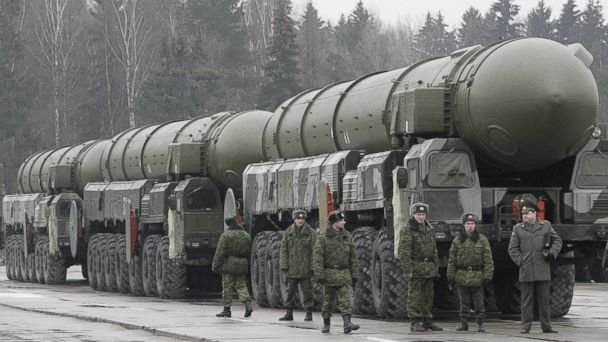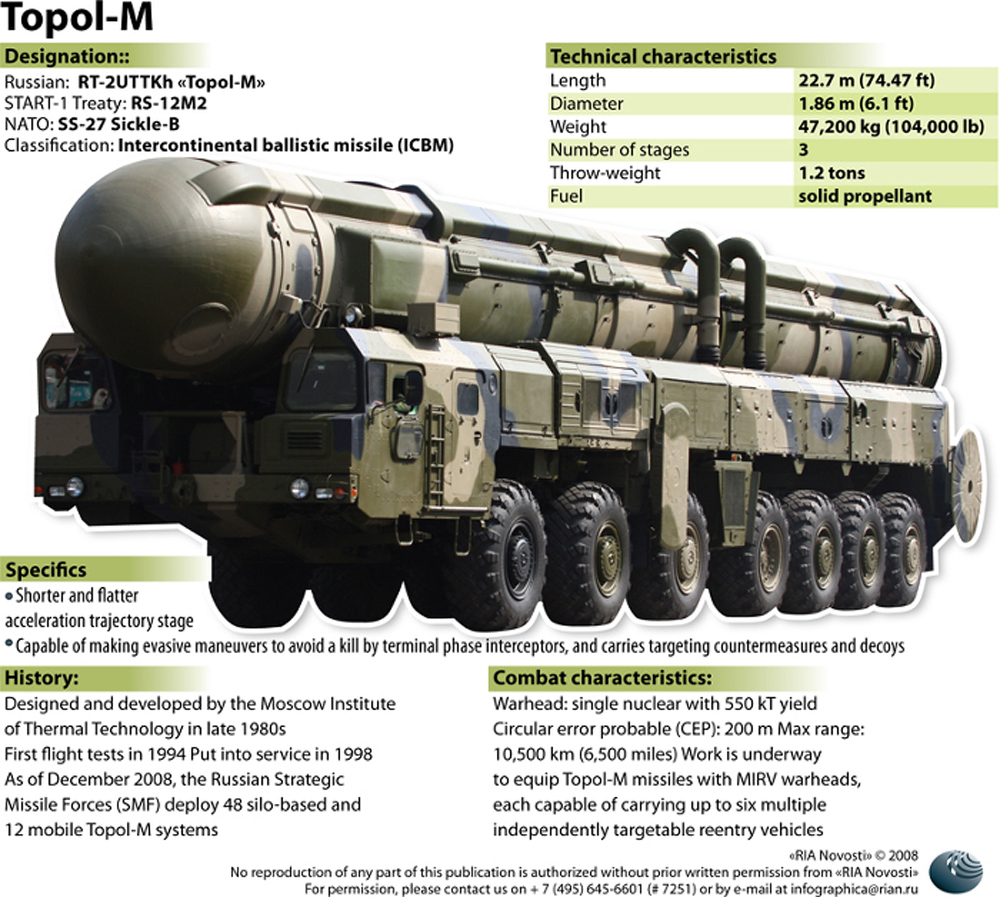
BRUSSELS — Peace between Russia and the West continues to deteriorate, with both sides taking action to turn up the tension recently.
Last week, Russian President Vladimir Putin announced that Russia would expand its nuclear arsenal with 40 new intercontinental ballistic missiles. Although both Russia and the United States already possess a combined 14,700 nuclear warheads — more than enough to cause unimaginable global devastation — the announcement seems to have touched off a new round of posturing and military maneuvering between nations that have seen tensions rising since the Ukraine conflict began in 2013.
Adam Mount, a Stanton Nuclear Security Fellow at the Council on Foreign Relations, a nonpartisan foreign policy think tank, cautions that Putin’s announcement does not signify a major change in Russian nuclear policy, and could even benefit disarmament.
“Russia continues to comply fully with the New START treaty, which limits strategic launchers like ICBMs,” Mount wrote Thursday. “Because their Soviet-era ICBMs are aging out of service, Russian nuclear forces must take delivery of forty new ICBMs each year just to replicate their existing capability. Far from a threat, Russia’s ICBM modernization may actually make their arsenal more vulnerable.”

No matter how routine the announcement, NATO officials still see it as a reason to accuse Russia of military aggression. “Expressing concern over President Vladimir Putin’s announcement last week that Russia was to buy 40 new intercontinental ballistic missiles, Nato officials also said there was alarm over Russian rhetoric on nuclear weapons and the extent to which such weapons are involved in military exercises,” Ewan MacAskill wrote in the Guardian on Wednesday.
“Far from a threat, Russia’s ICBM modernization may actually make their arsenal more vulnerable.”
Meanwhile, NATO took aggressive steps of its own by beefing up its Response Force, thousands of soldiers and advanced military weaponry stationed near Russia’s borders. Already consisting of 13,000 troops, the rapid response force could be increased to as many as 40,000 troops, according to reports from this week’s NATO defense ministers’ meeting.
NATO Secretary-General Jens Stoltenberg claims the move wasn’t intended to increase tensions with Russia. “We do not seek confrontation, and we do not want a new arms race,” he told CNN.
The U.S. and its NATO allies helped destabilize their relationship with Russia by directly supporting the overthrow of Ukraine’s government and encircling the nation with military force. While tensions began to calm after the fall of the Soviet Union, military and political support for Ukraine’s reactionary government reversed that trend. “When Ukraine’s corrupt but elected president was overthrown in a US-backed coup, it was scarcely paranoid for Russia to see the takeover of the neighboring state as a threat to its core interests,” wrote Medea Benjamin, co-founder of anti-war group CodePink, in a 2014 editorial published by MintPress News.
But there are actions which might de-escalate the situation, according to supporters of nuclear disarmament who met in Vienna this week. The group, consisting of current and former defense officials from the U.S. and Europe, warned that a new arms race was imminent unless immediate steps are taken. One step that could provide immediate relief would be for the U.S. to ratify the Comprehensive Nuclear Test Ban treaty, which Russia already signed and ratified.
“The inability of the U.S. political system to ratify a treaty of any description is a function of its domestic dysfunctionality,” said Desmond Browne, vice-chair of Nuclear Threat Initiative, a nonprofit research group. “We have to engage.”

